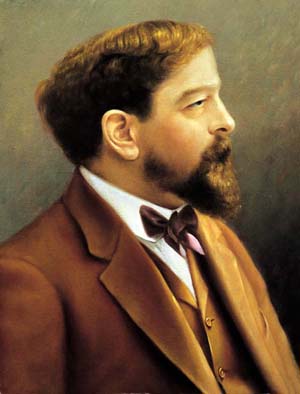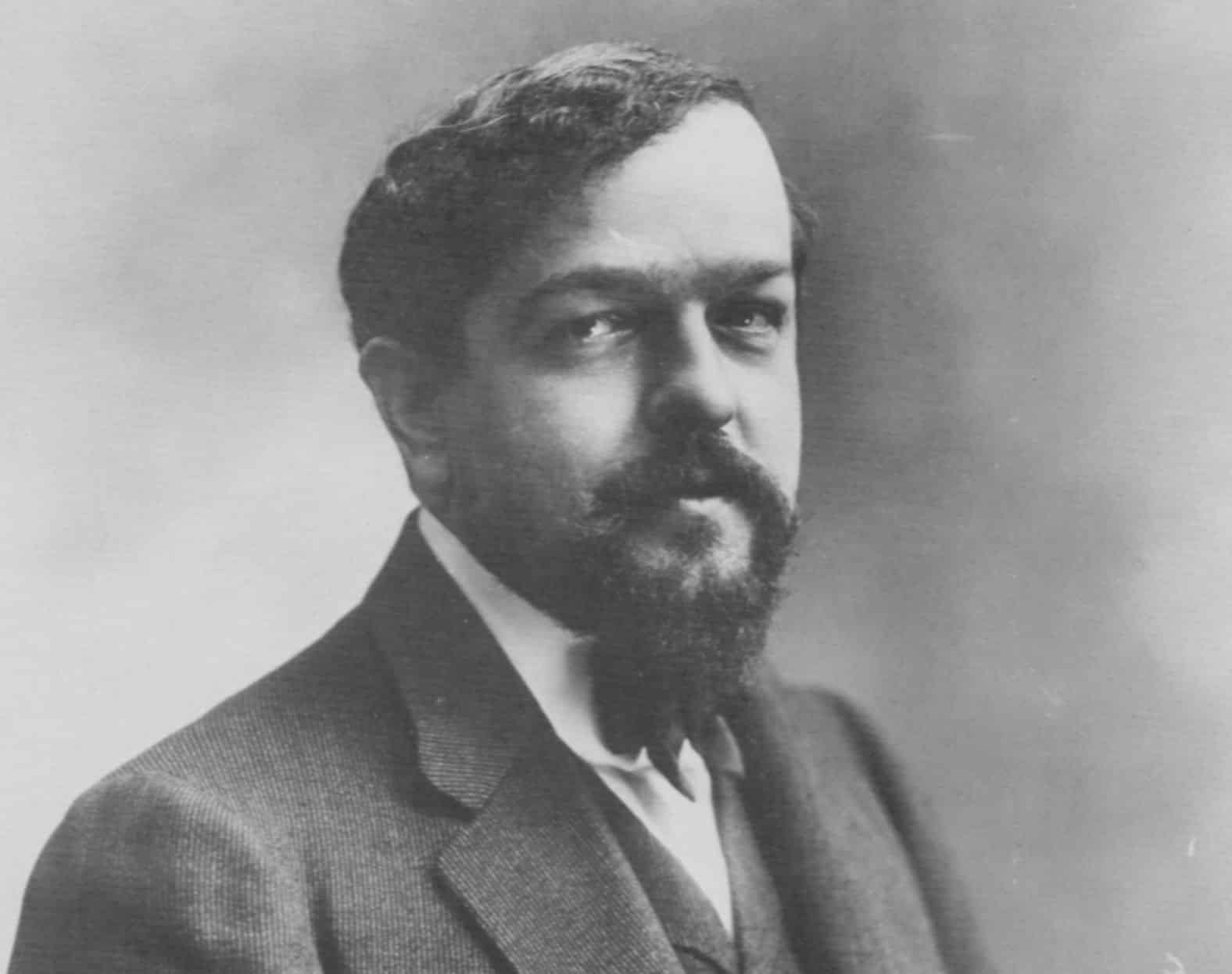Claude Debussy: A Life in Music
Introduction
Achille-Claude Debussy (1862–1918) was a French composer whose innovative works profoundly influenced 20th-century music. Often associated with musical Impressionism, a term he himself disliked, Debussy developed a highly original system of harmony and musical structure. His compositions, characterized by their evocative atmospheres and subtle textures, broke away from the traditional Romantic forms prevalent in the 19th century. This biography will explore the life and works of this seminal figure, from his early years to his lasting legacy.

Childhood (1862-1872)
Born on August 22, 1862, in Saint-Germain-en-Laye, France, Achille-Claude Debussy was the eldest of five children in a modest family. His father, Manuel-Achille Debussy, owned a china shop, and his mother, Victorine Manoury Debussy, was a seamstress. The family moved to Paris in 1867. Debussy’s musical talent was discovered relatively late. He began piano lessons at the age of seven with a local teacher, and at nine, he was encouraged by Madame Mauté de Fleurville, who claimed to have been a pupil of Frédéric Chopin. In 1872, at the age of ten, Debussy entered the Paris Conservatoire, where he studied piano, composition, and solfège. His early years at the Conservatoire were marked by his rebellious nature and unconventional approach to music, often clashing with his conservative teachers.
Youth (1872-1884)
Debussy’s youth was a period of significant development and turbulence. While at the Paris Conservatoire, he studied under various prominent musicians, including Antoine François Marmontel for piano and Ernest Guiraud for composition. He showed great promise as a pianist but his unconventional harmonic ideas often put him at odds with his professors. During this time, he also traveled throughout Europe, notably to Russia, under the patronage of Nadezhda Filaretovna von Meck, the wealthy benefactress of Pyotr Ilyich Tchaikovsky. These travels exposed him to a wide range of musical influences, particularly Russian composers like Modest Mussorgsky and Aleksandr Borodin, whose works would later inspire his own. In 1884, Debussy won the prestigious Grand Prix de Rome with his cantata L’Enfant prodigue (The Prodigal Child), which earned him a three-year scholarship to the Villa Medici in Rome. However, he found the academic environment restrictive and returned to Paris after two years, eager to pursue his own artistic vision.
Adult Life and Artistic Development (1884-1914)
Upon his return to Paris, Debussy immersed himself in the vibrant artistic and intellectual circles of the city. He frequented Symbolist literary salons and Impressionist art exhibitions, drawing inspiration from these movements. His friendships with poets like Stéphane Mallarmé and painters like Claude Monet deeply influenced his aesthetic. Debussy’s personal life during this period was often tumultuous, marked by several significant relationships. His marriage to Rosalie (‘Lily’) Texier in 1899 ended in a scandalous divorce in 1904, followed by his marriage to Emma Bardac, with whom he had a daughter, Claude-Emma, affectionately known as ‘Chouchou,’ in 1905. Chouchou became the inspiration for his beloved piano suite Children’s Corner (1908).
Artistically, Debussy continued to forge his unique path, moving away from traditional Germanic Romanticism. He sought to create music that was fluid, atmospheric, and suggestive, rather than overtly dramatic or narrative. He experimented with new harmonic structures, scales (such as the whole-tone and pentatonic scales), and rhythmic complexities. His music often evoked imagery from nature, mythology, and exotic lands, characterized by shimmering textures, subtle nuances, and a sense of timelessness. This period saw the creation of many of his most iconic works, solidifying his reputation as a revolutionary composer.
Main Compositions
Debussy’s oeuvre is rich and diverse, encompassing orchestral works, piano pieces, chamber music, and an opera. Some of his most significant compositions include:
•Prélude à l’après-midi d’un faune (Prelude to the Afternoon of a Faun, 1894): This symphonic poem, inspired by a poem by Stéphane Mallarmé, is considered a landmark work of musical Impressionism. Its evocative melodies and harmonies create a dreamlike atmosphere.
•Nocturnes (1899): An orchestral triptych comprising ‘Nuages’ (Clouds), ‘Fêtes’ (Festivals), and ‘Sirènes’ (Sirens). These pieces showcase Debussy’s mastery of orchestral color and atmospheric effects.
•Pelléas et Mélisande (1902): Debussy’s only completed opera, based on Maurice Maeterlinck’s Symbolist play. It is notable for its subtle vocal lines, atmospheric orchestration, and rejection of traditional operatic conventions.
•La Mer (The Sea, 1905): A three-movement orchestral work depicting various aspects of the sea. It is a powerful example of Debussy’s innovative use of harmony and orchestration to create vivid sonic landscapes.
•Images (1905, 1907): Two sets of piano pieces that further explore Debussy’s Impressionistic style, with titles like ‘Reflets dans l’eau’ (Reflections in the Water) and ‘Poissons d’or’ (Goldfish).
•Children’s Corner (1908): A suite of six piano pieces dedicated to his daughter, Chouchou. These charming and whimsical pieces demonstrate Debussy’s ability to capture the innocence and playfulness of childhood.
•Préludes (Books I and II, 1910, 1913): Twenty-four piano preludes, each a miniature masterpiece exploring a wide range of moods, textures, and technical challenges. They include popular pieces such as ‘La fille aux cheveux de lin’ (The Girl with the Flaxen Hair) and ‘Clair de lune’ (Moonlight, though this is also part of his earlier Suite bergamasque).
•Études (1915): Twelve challenging piano études that showcase Debussy’s continued exploration of piano technique and musical form.
•Sonatas (1915-1917): A series of sonatas for various instruments, including the Cello Sonata (1915), Sonata for Flute, Viola, and Harp (1915), and Violin Sonata (1917). These late works demonstrate a more concise and often melancholic style.
Death (1918)
Claude Debussy’s final years were marked by declining health. He was diagnosed with colorectal cancer in 1909, a condition that progressively worsened and ultimately led to his death. Despite his illness, he continued to compose, though at a slower pace. The outbreak of World War I in 1914 deeply affected him, both personally and artistically, as he became increasingly patriotic. He died in his home in Paris on March 25, 1918, during the German spring offensive, just months before the end of the war. His death, at the age of 55, deprived the musical world of one of its most innovative and influential voices.

Conclusion
Claude Debussy remains one of the most significant figures in classical music history. His revolutionary approach to harmony, orchestration, and form opened new avenues for musical expression, paving the way for many 20th-century composers. He challenged the established norms of his time, creating a unique sound world characterized by its fluidity, sensuality, and atmospheric qualities. Debussy’s legacy extends beyond his role as a pioneer of Impressionism; his relentless pursuit of new sounds and his emphasis on color and texture continue to inspire musicians and captivate audiences worldwide. His music, often described as a bridge between Romanticism and modernism, stands as a testament to his genius and enduring influence.
Comments are closed